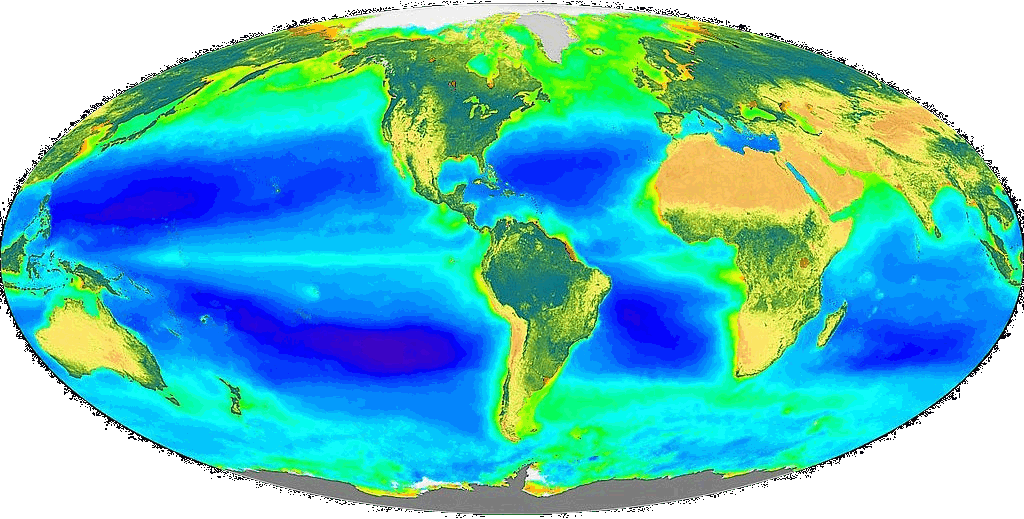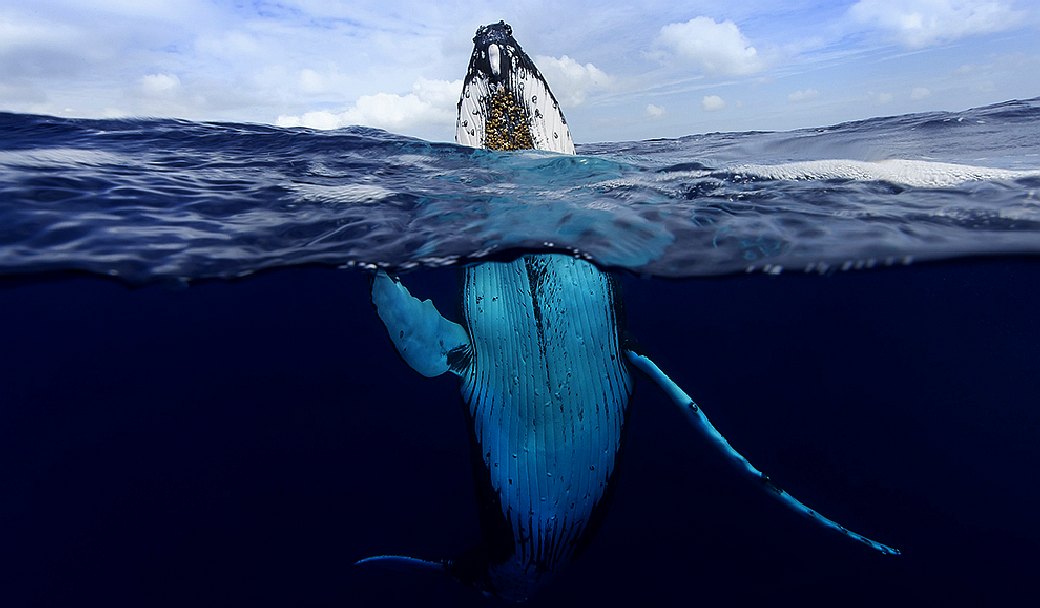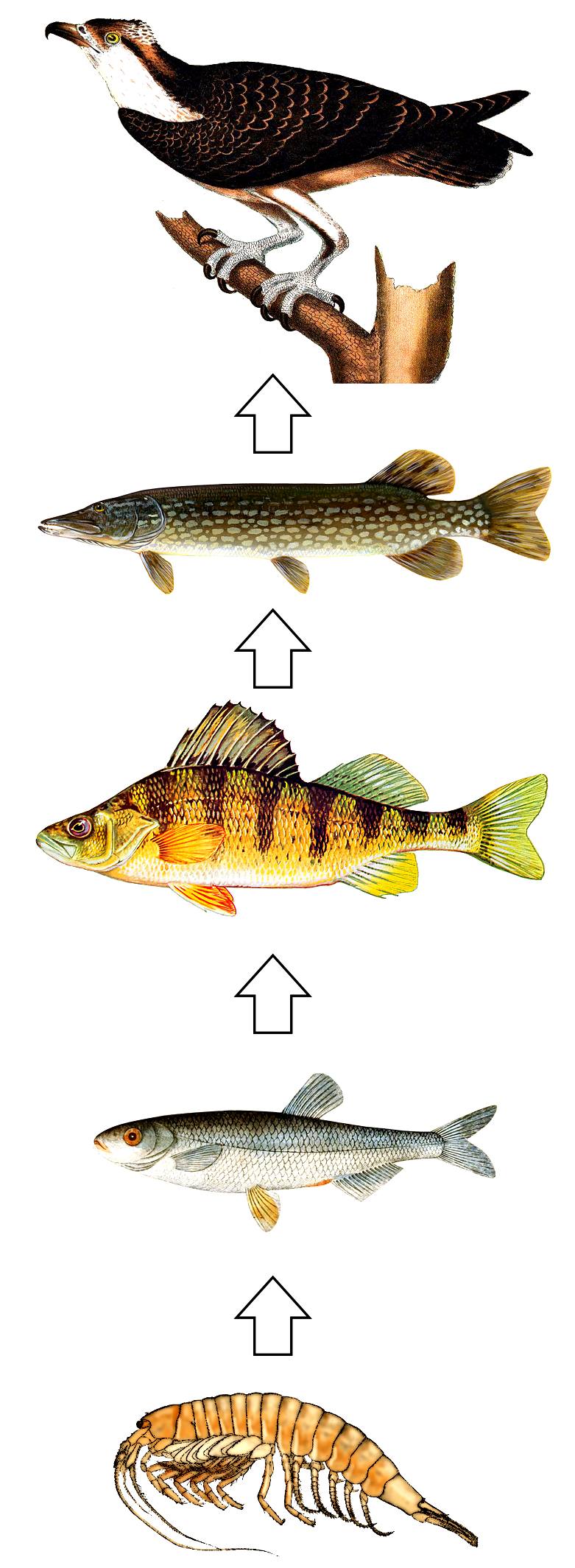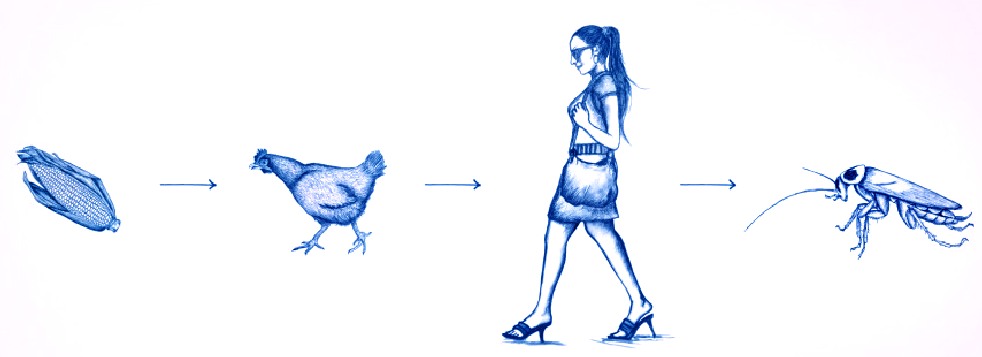|
F O O D C H A I N S
ABOUT - CONTACTS - DONATE - FOUNDATION - HOME - A-Z INDEX
INCOMING FOOD ENERGY - The average rate of energy capture by photosynthesis globally is approximately 130 terawatts, which is about three times the current power consumption of human civilization. Plants usually convert light into chemical energy with a photosynthetic efficiency of 3Ė6%. It is estimated that between 50% and 85% of the world's oxygen is produced via phytoplankton photosynthesis. Photosynthetic organisms also convert around 100Ė115 thousand million metric tonnes of carbon into biomass per year.
At every successive stage of any food chain, potential energy for life is lost as one animal absorbs the other. By the time animal protein reaches our tables as meat or fish the theoretical 130 terawatts (trillion watts) we started with for all life on earth is significantly reduced.
A human must take in about 2500 Calories (kilocalories) of energy in his or her food each day in order to function properly. This means that he or she uses up energy at a rate of (power) of 2500 kilocalories/day. Where 1 calorie = 4.2 joules, the appropriate conversion reveals that this rate of energy usage is about the same as a 100 watt light bulb.
If we need 100 watts each to live, with a population of 7.5 billion souls we need 750,000 megawatts (0.75 terawatts) of food energy just for us humans. Divide our theoretical 130 / .75 and it looks as though the planet could support 173 times our present human population, but then we have to divide the bio energy (173) harvest by the energy conversion at each stage of the food chain - and take off the energy for all of the other animals in the food chain. Life requires energy and that energy comes from the sun.
And yes, humans are competing with all other life on earth for food. It is not all ours to squander. But, for simplicity and just by way of an example, we'll ignore: tigers, lions, whales, polar bears and sharks.
If the conversion rate at each stage of the food chain is taken as being 3:1, then our 173 multiple comes down to 57. Assuming another two conversion stages bounces us down to 19 and finally 6.4. So roughly six and a half times what we need for our 7.5 billion population ignoring other apex predators and life in between.
Farming improves on this example, but we are losing agricultural land and climate change and ocean pollution is reducing wild fish supply.
TOP OF THE WORLD - Large filter feeders like this humpback whale are at the top of their food chain and so entirely reliant on the chain to be free of cancerous toxins or plastic for a healthy life. It's important to remember that when an organism eats itís prey, it only gets a fraction of the energy that the prey has. This is why as we go up the food pyramid, the number of organisms decrease. This is because there isnít enough energy to sustain too many lives. Most of the energy in a food chain is lost through metabolism or through heat.
WHAT IS A FOOD CHAIN ?
A food chain is a linear network of links in a food web starting from producer or Primary organisms (such as grass or trees on land, and phytoplankton in the sea, which use the radiation from the sun to make their food) and ending at apex or Predator species (like grizzly bears or killer whales), detritivores (like earthworms or woodlice), or decomposer species (such as fungi or bacteria) that reduce Predator and Primary organisms to earth to give us a (sustainable) life cycle.
A food chain also shows how the organisms are related with each other by the food they eat. Each level of a food chain represents a different trophic level. A food chain differs from a food web, because the complex network of different animals' feeding relations are aggregated and the chain only follows a direct, linear pathway of one animal at a time.
WHAT IS A FOOD WEB ?
Natural interconnections between food chains make it a food web. A common metric used to quantify food web trophic structure is food chain length. In its simplest form, the length of a chain is the number of links between a trophic consumer and the base of the web and the mean chain length of an entire web is the arithmetic average of the lengths of all chains in a food web.
DIETARY SUPPLEMENTS CAN HELP
AMINO
ACIDS (BRANCH CHAIN BCCA)
MAKE SURE YOU INCLUDE VITAMINS
VITAMIN
A
AND DON'T FORGET YOUR MINERALS
BETA-CAROTENE
FOOD
CHAIN EXAMPLE - The food chain is a representation of who eats whom. It starts with plants fixing sunlight into complex organic substances (food), which gets consumed by herbivores, then carnivores and then bigger carnivores. The same occurs in aquatic ecosystems, but the players are different; phytoplanktons fix the sunlight and are first consumed by zooplanktons, then fishes and then bigger fishes.
CONTAMINATION
If producer organisms are able to ingest toxins or plastics or microplastics laden with carcinogenic toxins, when they are eaten by the next predator up the line, those contaminants are stored in their bodies for the next predator up the line, until finally the top of the food consumption pyramid is poisoned by the accumulation.
Man is at the top of the food chain and the major consumer of all flora and fauna on the planet. Man, is therefore likely to suffer the most from contamination of his primary food sources. Ironically, man is the most dirty animal on the planet, fouling his patch with chemicals and plastic and dumping them in our rivers and oceans where these pollutants enter the food chain to come back and haunt the human race.
Such practices are not sustainable and not compatible with a circular economy.
BIOMAGNIFICATION - BP DEEPWATER - CANCER - DDT - FISHING NETS - FUKUSHIMA - MICROBEADS - MICRO PLASTICS - OCEAN GYRES - OCEAN WASTE - PACKAGING - PCBS - PET - PLASTIC - POPS - SINGLE USE
LINKS & REFERENCE
https://en.wikipedia.org/wiki/Food_web
This website is provided on a free basis as a public information service. Copyright © Cleaner Oceans Foundation Ltd (COFL) (Company No: 4674774) 2022. Solar Studios, BN271RF, United Kingdom. COFL is a charity without share capital.
|






